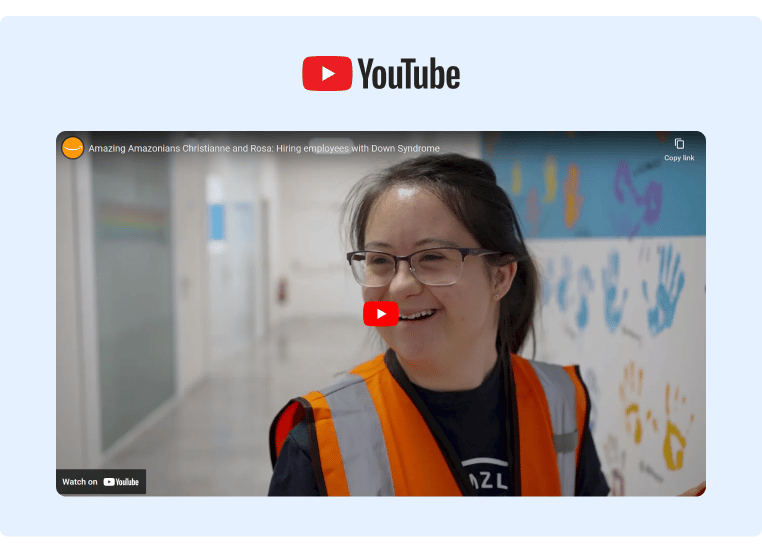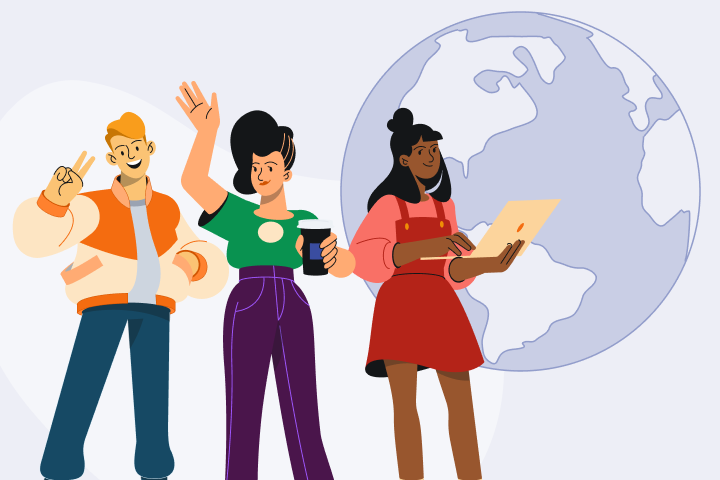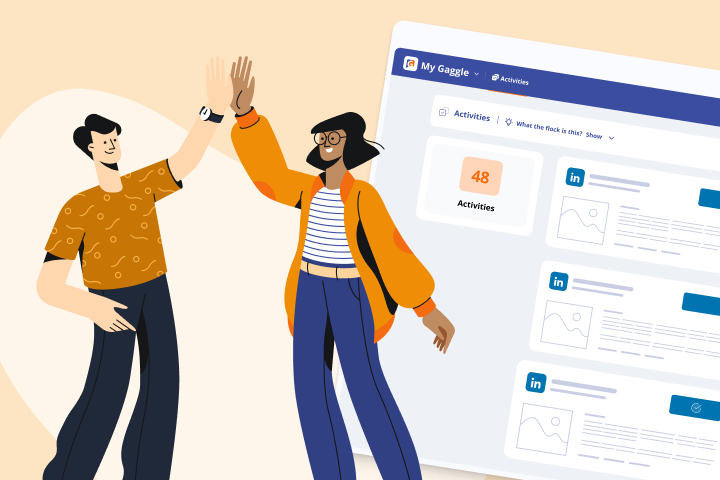Inclusive Employer Branding: Attract and Retain Diverse Talent
Once you have a strong employer branding strategy in place, the work doesn’t stop there. Your company needs a strong employee brand, too.
You’re probably thinking, “Wait, what’s the difference between employer branding and employee branding?”
While there are some overlapping similarities between the two types of branding, there are some distinct differences. The key thing to remember about employer branding: it’s the perception of your company (by current employees, stakeholders, and the public) as an employer. Your HR and executives craft and execute the messaging of why your company is a great place to work for (and with).
While employer branding is about the company’s perception, employee branding is the process of getting your employees on board with your company’s mission, values, and vision. In turn, this motivates your employees to share that message with customers, stakeholders, coworkers, and future employees. Essentially, you’re turning your employees into brand advocates. This is where an employee advocacy strategy comes into play. (More on that later.)
Not only do you need to have a strong employee brand, but it also needs to be inclusive for today’s diverse workplace. In this article, we’ll discuss the importance of inclusive employee branding and how to craft an inclusive employee brand.
Understanding Diversity in the Workplace
Diversity in the workplace is a value many companies strive to achieve. But, having a diverse workforce isn’t just limited to gender, race, age, religion, and sexual orientation; it has expanded to include physical ability and neurodiversity, too.
By employing individuals from a variety of different backgrounds, you’ll be creating a diverse and inclusive team that is better able to respond to the challenges and needs of your target audience.
Let’s explore some more benefits of diverse teams.
Benefits of Diverse Teams

Source: HR University
Diverse teams have many benefits for both employees and the company. Some of these benefits include:
- Enhanced Problem-Solving and Innovation. Individuals with distinct backgrounds bring a mix of unique viewpoints, experiences, and skills to the table. This gives them the ability to think outside of the box, develop solutions to existing problems, and create new products/services.
- Higher Employee Engagement. In a diverse team setting, employees tend to feel more comfortable and valued. When employees feel like they’re being heard, and their contributions are recognized and valued, employee engagement rises. Employee engagement is important because employees are more likely to stay with the company as well as share with others why their company is a great place to work.
- Increased ROI. Diverse teams bring different skills that can improve productivity. When employees are able to use their strengths on specific projects, project turnaround can increase potentially resulting in an increase in profits.
Now that we know some of the benefits of diverse teams, let’s take a look at the role of employee branding and how you can use it to attract a diverse team.
The Role of Employee Branding
Employee branding plays an important role in helping to attract a diverse workforce. When your employees communicate your commitment to diversity and inclusion, they’re showing others that your company is an inclusive and welcoming place to work.
By having the messaging coming from your employees, it feels more authentic, which fosters an even stronger connection. Ultimately, solid employee branding can help you attract potential new candidates, stakeholders, and retain your current workforce as well.
Now that we know the importance of a diverse workforce and the role that employee branding plays in attracting a diverse team, it’s time to create your own inclusive employee brand.
So, how do you craft an inclusive employee brand? Let’s find out.
Crafting an Inclusive Employee Brand
To build your own strong inclusive employee brand, follow these three steps:
1. Define Your Company’s Values and Mission
Begin by clearly defining your company’s values and mission. This will give insight into what makes your company unique and what it’s like to work for (and work with) your company.
Ally Financial is a great example of a company whose mission is not only to financially help its customers but its employees, too. To ensure equity, Ally has set its minimum wage to $23 an hour and the company regularly reviews pay across all positions.

Source: Ally
Furthermore, Ally has taken actionable steps in achieving diversity, equity, and inclusion by implementing training to help its leaders identify cognitive bias, too.
2. Reflect Diversity in Branding Elements
The four main elements of branding are brand identity, brand image, brand culture, and brand personality. To create an inclusive employee brand, your branding elements need to also reflect how your brand is diverse.
For example, part of Amazon’s global brand identity is being a top employer for diverse talent. That diverse talent pool now includes hiring individuals living with Down Syndrome and learning difficulties.

Source: Amazon
Thanks to Amazon’s diversity, equity, and inclusion work initiative, two Amazon employees (located in Spain) launched a program to help people with Down Syndrome get hired. To spread the word about the program, Amazon staff produced a video interview and shared it on their website and YouTube channel.
3. Inclusivity in Company Culture
An inclusive employee brand is not just about external representation. It must be mirrored in your company culture. Encourage an inclusive work environment where all employees feel valued and heard, regardless of their background.
Accenture enhances its diversity and inclusion with mandatory employee training on antiracism and unconscious bias. It also strives for a gender-balanced workforce and ensures equal access to medical coverage for LGBTQ+ members and their partners.

Source: Accenture
Crafting your inclusive employee brand is just the first part. Once that foundation is laid, the next part is communicating your employee brand effectively.
Communicating Your Inclusive Brand
Once you've crafted your inclusive employee brand, it's time to communicate it. Here are three tips:
1. Use Effective Internal Communication
Consistent, timely internal communication will help keep your employees in the loop so they can share with others your company’s commitment to diversity and current initiatives. Forms of internal communication can include company emails, newsletters, meetings, etc.
2. Showcase Diversity in Your Recruitment
To recruit more diverse candidates for your company, your job posting/description needs to be more appealing to diverse candidates. Use inclusive language and emphasize your company’s commitment to diversity and inclusion. Be sure to highlight that individuals from diverse backgrounds are encouraged to apply. Many companies outsource to recruiting experts to provide different solutions to accessing a diverse talent pool and hiring the right one. Partnering with such experts can help you tap into their knowledge and networks, ultimately assisting in the recruitment of a diverse and talented workforce.
3. Promote Externally with Employee Advocacy
Use employee advocacy to externally promote your employee branding efforts. (You can also use it to promote internally, too.) Employee advocacy empowers your workforce to share positive experiences, values, and insights about your company on social media and other public platforms. By encouraging your employees to become brand ambassadors, you’ll leverage authentic voices to amplify your brand message. This approach not only adds a human touch to your brand but also enhances credibility and builds trust.
Measuring Success
Once you’ve developed and implemented your inclusive employee branding strategy, it’s important to monitor its effectiveness. Here are a couple of ways to measure how well it’s working:
Key Performance Indicators
To evaluate the success of your employee branding, you want a quantifiable measure. By establishing key performance indicators (KPIs) that align with your diversity and inclusion goals, you’ll be able to track your performance goals. These KPIs can include metrics related to diversity in recruitment, employee satisfaction, and innovation.

Source: PR Daily for Petco
Keep track of what’s working (and what isn’t) and modify accordingly.
Feedback and Improvement
Gather feedback from your employees and regularly review your diversity and inclusion strategies. This feedback could be in the form of surveys, polls, one-on-one meetings, etc. Use this feedback to make improvements to the changing needs of your workforce (and target audience).
Final Thoughts
The importance of having an inclusive employee brand cannot be overstated. Embracing diversity in employee branding isn't just a trend; it's a strategic must. Promoting diversity and inclusion in employee branding, both internally and externally, will lead to a more innovative, productive, and profitable business.
If you want to take your employee branding to the next level, consider using an employee advocacy tool like GaggleAMP. Schedule your free demo today.








